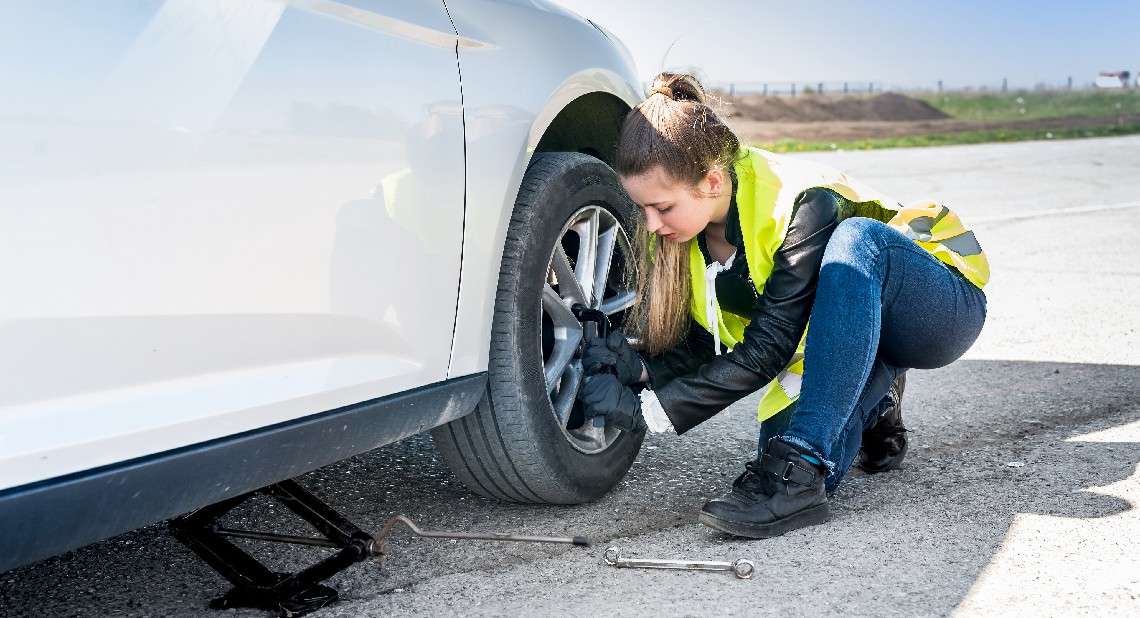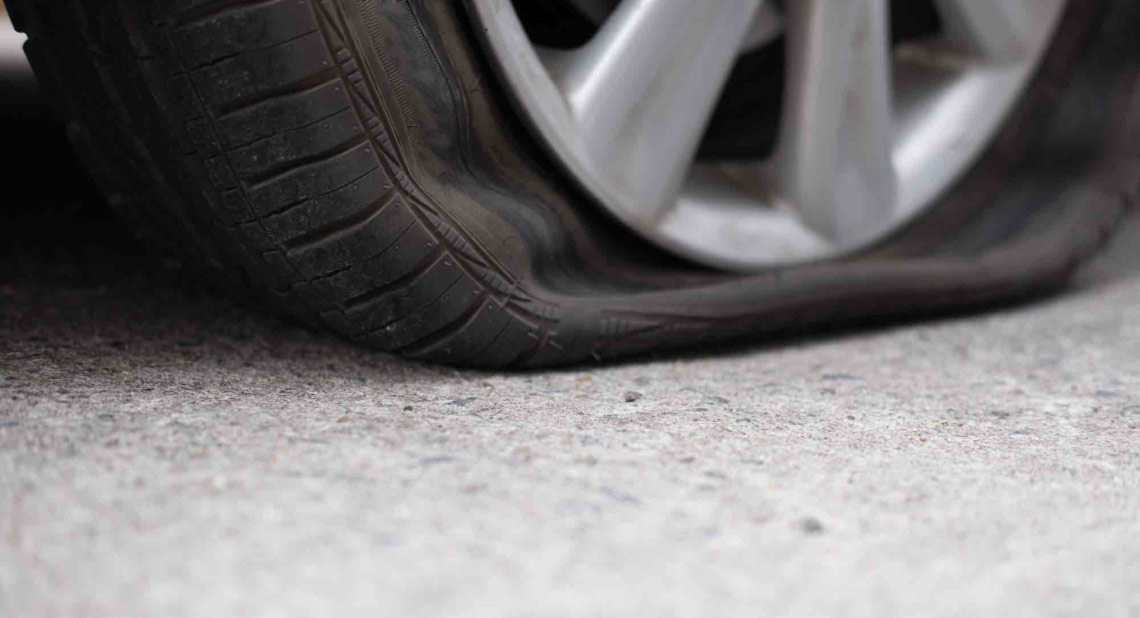Driving safely and checking your tyres regularly can reduce your chance of a puncture tyre defect or even a blowout. This is turn will reduce the chance of you skidding, which renders you out of control and potentially in need of breakdown assistance.
Read this article by Ian Cook for some top tips on how to avoid your car tyre bursting, and what to do if it does.
A tyre burst can be one of the most frightening experiences for any driver, whether a novice or an experienced motorist. So, it makes sense to know how to handle the worst should it happen.
It’s also good to remember that a few simple steps can help to prevent these situations from happening in the first place. Prevention is the best course of action when it comes to tyre bursts, so do try to keep your tyres in good shape.
Here are ten top tips on how to prevent and handle a burst tyre:
1. Check your tyres regularly. Make sure you check regularly for damage to tyre treads looking for any splits or cracks in either the tread or sidewalls, particularly before long road trips. Know the correct tyre pressure before you set off and stick to it. Making sure that your tyres are healthy will help to prevent a tyre failure from happening.
If you are unsure if the tyre is legal or not, why not try the simple 20p test? Insert the 20p in between your tyre tread and if you can see the ’20’ mark then the tyre is likely to be legal. Anything lower may mean that the tyre requires replacement.
If you’re a Motability Scheme customer then your lease includes tyre repair and replacement from Kwik Fit – you can learn more about this here.
2. When driving, keep your speed down. Another way to prevent a bad situation from a burst tyre is by driving cautiously. Higher speeds equal higher potential danger if your tyre does burst or “blow” due to heat expansion.
3. Stay calm. If your tyre fails, you may hear a loud “boom” or “bang” of the popping tyre reverberating through your car. Even though it will be a shock, try to stay calm and not panic.
4. Don’t hit the brakes. Although it’s a natural instinct, slamming down on the brakes is the worst possible thing to do. It will throw your vehicle off balance, send you into a spin or simply cause you to lose complete control.
5. Don’t release the accelerator suddenly. Yes, you should begin to slow down and downshift through the gears, but do this gradually.
6. Keep your hands on the wheel. With your hands firmly on the steering wheel, keep your vehicle going straight ahead in order to avoid any collisions after the blowout.
7. Don’t try to “over-correct”. It may be tempting to turn the steering wheel in the opposite direction, but this will only make the loss of control more likely. Do your best to keep going straight ahead.
8. Let your car gradually slow down and finally come to a complete stop. On a motorway, the obvious place to stop is the hard shoulder. Lay-bys are other obvious places on major routes. In other places, it makes sense to look out for stops like a shop car park or by the side of the road where it’s safe to do so.
9. Try to stop somewhere safe. It really can’t be over-emphasised that you should only stop in a place where it is safe to do so. Once you have come to a complete stop, turn on your emergency or hazard lights.
10. Call for assistance. As a Motability scheme member, your vehicle is covered by the RAC breakdown assistance for the whole of your lease. If you experience a tyre blowout, you can call them on 0800 7311173. RAC Motability Assist are available 24 hours a day, 365 days a year and they will aim to get a patrol vehicle out to you within 45 minutes. When you speak to them, you should let them know if either you or a passenger uses a wheelchair, needs urgent medical attention or has other requirements. When they arrive, they will look after the repair of the vehicle and help you get to your destination if needed.
It’s reassuring to know that a tyre blow-out, while potentially scary, can be dealt with quickly and safely with the support of the Motability Scheme. The best course of action is always to ensure you drive safely, stay calm if anything happens, and make sure that you get into a safe place before calling for assistance. The problem will be dealt with as part of your all-inclusive package, which you can learn more about here.
Related articles
What are the risks of under-inflated tyres?
Car safety technology: 10 top techs for safer driving in 2021
Need new tyres? We have you covered!
![]()







